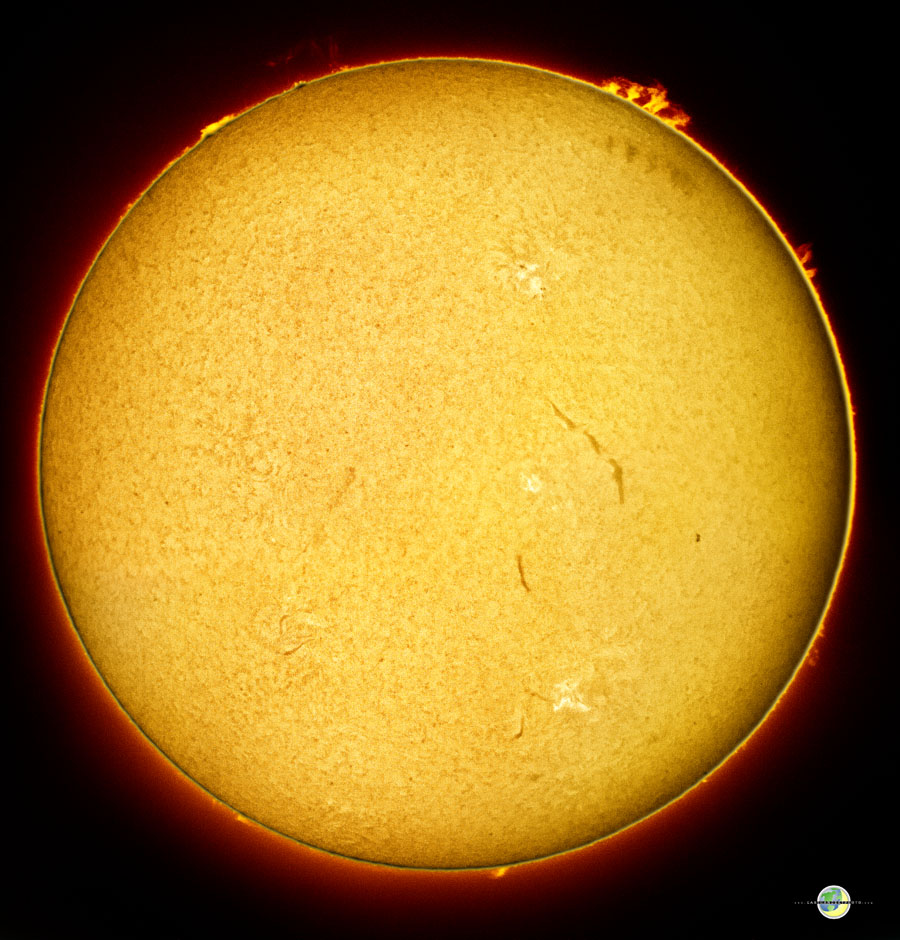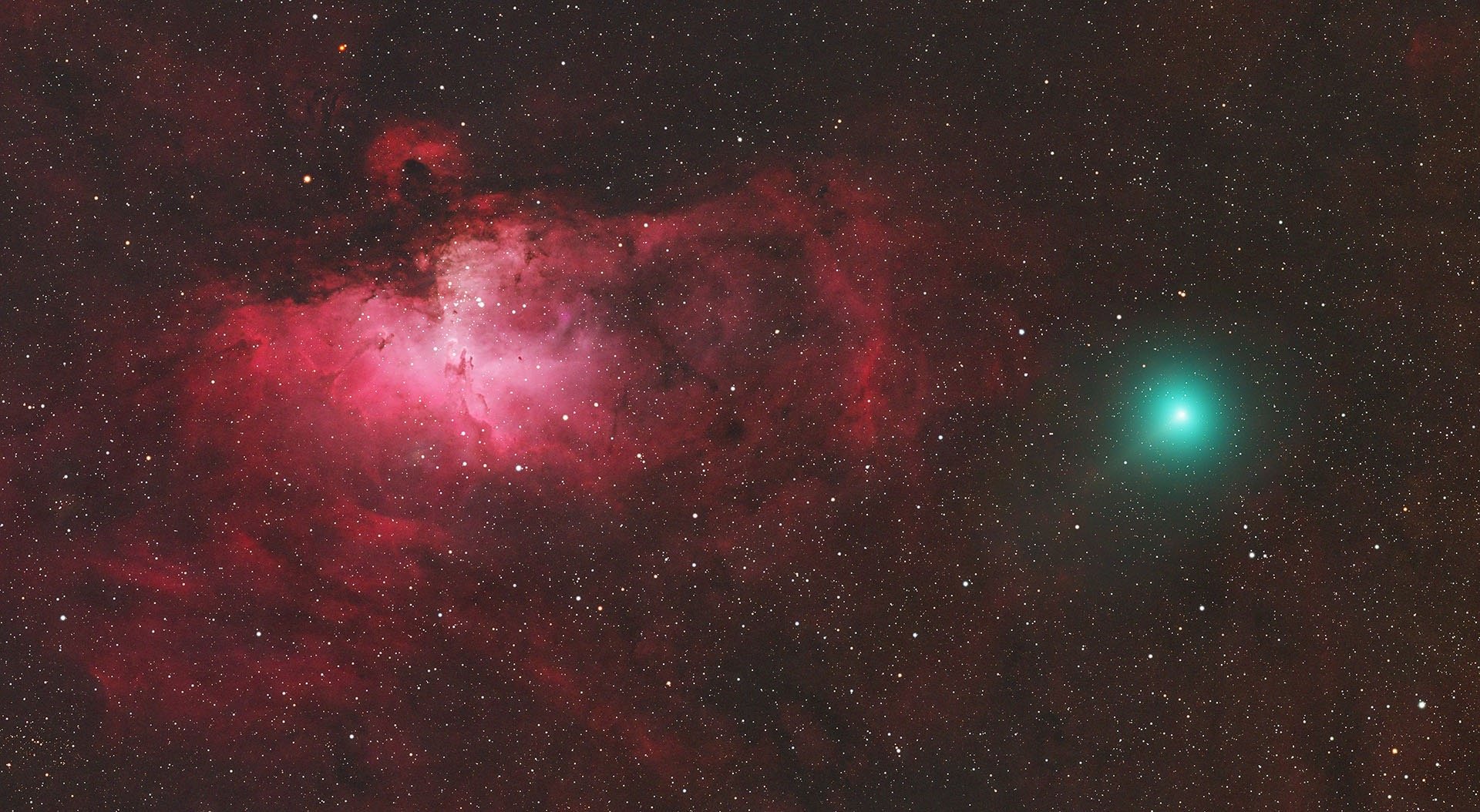Winter Experimentation-Cone Nebula and Christmas Tree cluster (NGC 2264)
This winter I made the decision to increase imaging time from my house by the most efficient utilization of astronomical filters possible. I live in a rural/suburban Bortle 4 transition zone. My zenith to the south and east are pretty decent. due north has a light dome from Huntington, WV.
I am a One Shot Color (OSC) guy. I know…but I just am. My imaging setup this winter was with the Astro-Physics 130GT and AP .8x focal reducer and the modified Canon T5i. The T5i performs very well on cold winter nights.
Oh…I will be giving a presentation on my experience with filters and OSC imaging at Green Bank Star Quest 2019 on Friday June 28. Click the link for registration and more information on GBSQ 2019.
I utilized 4 filters over the winter;
Astronomik 12nm Halpha EOS clip in
Astronomik CLS EOS clip in
Astronomik CLS CCD 2”
STC Duo Narrow Band EOS clip in
I will post my presentation to the blog after Green Bank which details observations and findings with each of these filters.
My hands-down favorite filter from my house is the STC Duo Narrow Band clip in. This filter has very nice color balance for a narrow band filter right out of the modified camera. It has beautiful contrast and does send some signal to the entire Bayer matrix.
Memorial weekend afforded me some time to work on the data I collected from November to February on the Cone Nebula and Christmas Tree cluster. Basically, I took the red channel from the STC data and the green and blue channel from a combined version of the Astronomik CLS CCD and CLS filters.
A total of over 12 hours of data was gathered for this image. I did not calibrate with flats, darks, or bias frames.
If you would like more information on the area, please Google NCG 2264 or Christmas Tree cluster or Cone nebula. It is a fascinating part of our winter Milky Way rising just a bit after the Orion constellation.
Please click on the image below for a larger light box presentation.
Have a great week!
New camera...new focal length
My current imaging setup had two deficiencies; short focal length for galaxy season and non-cooled camera for hot nights.
The short focal length deficiency has a compromising, but effective remedy. Astro-physics updated their Barlow to the Advanced Barlow which is more corrected for photography with APS C sensors. The 2x Barlow provides a flat field across 80% of the sensor.
The non-cooled camera was solved by the new ZWO ASI294 MC Pro. A cooled CMOS sensor in a 4/3 format which matches well with my Canon T5i.
Main reason for this camera...
- one shot color. I don’t want to mess with multi-filter images.
- 14 bit dynamic range
- ability to control via WiFi on iOS device via ASI Air.
First test of this setup was last last week with excellent results. I was able to achieve a nice image scale on M51 that I believe is better than simply enlarging a shorter focal length image.
And I LOVE utilizing the iPad for image control of the camera!!!!!
Easter Veil (NGC 6992)
Part of the Cygnus Loop, the Eastern Veil Nebula is one of the brighter sections of the loop and is visible in telescopes, especially with the aid of contrast enhancing filters.
Image acquisition: Taken with an AP130EDTGT and modified Canon T5i camera. 60 exposures of 2 minutes at ISO 1600 unguided were combined and processed in Pixinsight with final enhancement in PS CS. Taken during Greenbank Star Quest 2018.
Lagoon and Trifid Nebulae
 Lagoon and Trifid NebulaeLooking toward the center of the Milky Way galaxy we are treated to numerous glowing patches of glowing gas and dust. The three most prominent patches of nebulosity in this image are known , from L to R, as NGC 6559, M8, and M20. The large nebula M8 (M for Charles Messier) is commonly known as the Lagoon Nebula. The blue and red nebula at the top right is M20 and is commonly known as the Trifid Nebula. We are looking toward the center of the Milky Way galaxy in this image and the distance to these objects is approximately 4,000 light years. M8 and M20 are beautiful sights in a common pair of binoculars in the summer sky. From the northern hemisphere they lie due south after sunset in the summer months and are in the constellation of Sagittarius.
Lagoon and Trifid NebulaeLooking toward the center of the Milky Way galaxy we are treated to numerous glowing patches of glowing gas and dust. The three most prominent patches of nebulosity in this image are known , from L to R, as NGC 6559, M8, and M20. The large nebula M8 (M for Charles Messier) is commonly known as the Lagoon Nebula. The blue and red nebula at the top right is M20 and is commonly known as the Trifid Nebula. We are looking toward the center of the Milky Way galaxy in this image and the distance to these objects is approximately 4,000 light years. M8 and M20 are beautiful sights in a common pair of binoculars in the summer sky. From the northern hemisphere they lie due south after sunset in the summer months and are in the constellation of Sagittarius.
Please click on the image or here for a larger presentation and more information on how the image was acquired.
The Solar Disk in Hydrogen Alpha Light
 Solar disk in hydrogen alpha lightI have always admired the work of dedicated solar imagers like Greg Piepol and recently had an opportunity to work with some specialized solar imaging gear. The filter required for this very narrow band of light is very expensive. Larry Oyster let me take his TV102/Coronado SolarMax setup to the Green Bank Star Quest last month and we had beautiful skies to work with. For more information and a higher resolution image please click on the link here or click on the image. The image is at the bottom of the color astrophotography gallery listing.
Solar disk in hydrogen alpha lightI have always admired the work of dedicated solar imagers like Greg Piepol and recently had an opportunity to work with some specialized solar imaging gear. The filter required for this very narrow band of light is very expensive. Larry Oyster let me take his TV102/Coronado SolarMax setup to the Green Bank Star Quest last month and we had beautiful skies to work with. For more information and a higher resolution image please click on the link here or click on the image. The image is at the bottom of the color astrophotography gallery listing.
Thanks and stay tuned for many more images to come.
Jeff's Blog
Join me on photography journeys from desert landscapes to deep sky wonders.






















